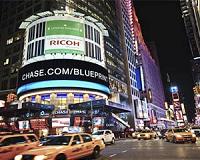 |
Chestnut Hill MA (SPX) Jun 08, 2010 A nano-scale solar cell inspired by the coaxial cable offers greater efficiency than any previously designed nanotech thin film solar cell by resolving the "thick and thin" challenge inherent to capturing light and extracting current for solar power, Boston College researchers report in the current online edition of the journal Physica Status Solidi. The quest for high power conversion efficiency in most thin film solar cells has been hampered by competing optical and electronic constraints. A cell must be thick enough to collect a sufficient amount of light, yet it needs to be thin enough to extract current. Physicists at Boston College found a way to resolve the "thick and thin" challenge through a nanoscale solar architecture based on the coaxial cable, a radio technology concept that dates back to the first trans-Atlantic communications lines laid in the mid 1800s. "Many groups around the world are working on nanowire-type solar cells, most using crystalline semiconductors," said co-author Michael Naughton, a professor of physics at Boston College. "This nanocoax cell architecture, on the other hand, does not require crystalline materials, and therefore offers promise for lower-cost solar power with ultrathin absorbers. With continued optimization, efficiencies beyond anything achieved in conventional planar architectures may be possible, while using smaller quantities of less costly material." Optically, the so-called nanocoax stands thick enough to capture light, yet its architecture makes it thin enough to allow a more efficient extraction of current, the researchers report in PSS's Rapid Research Letters. This makes the nanocoax, invented at Boston College in 2005 and patented last year, a new platform for low cost, high efficiency solar power. Constructed with amorphous silicon, the nanocoax cells yielded power conversion efficiency in excess of 8 percent, which is higher than any nanostructured thin film solar cell to date, the team reported. The ultra-thin nature of the cells reduces the Staebler-Wronski light-induced degradation effect, a major problem with conventional solar cells of this type, according to the team, which included Boston College Professors of Physics Krzysztof Kempa and Zhifeng Ren, as well as BC students and collaborators from Solasta Inc., of Newton, Mass., and �cole Polytechnique Federale de Lausanne, Institute of Microengineering in Switzerland. The research was funded in part by a Technology Incubator grant from the Department of Energy.
Share This Article With Planet Earth
Related Links Boston College All About Solar Energy at SolarDaily.com
 Ricoh Completes Times Square's First 100 Percent Solar Powered Billboard
Ricoh Completes Times Square's First 100 Percent Solar Powered BillboardWest Caldwell NJ (SPX) Jun 08, 2010 Ricoh Americas Corporation has announced the completion of its 100 percent solar powered electronic billboard, the Ricoh Eco Board, located at 3 Times Square at the corner of 7th Avenue and 42nd Street. The Ricoh Eco Board, which is 47 feet high by 126 feet long, is the first billboard in Times Square to be totally lit by solar energy. It is powered solely by 62 solar panels and 24 thin-fi ... read more |
|
| The content herein, unless otherwise known to be public domain, are Copyright 1995-2010 - SpaceDaily. AFP and UPI Wire Stories are copyright Agence France-Presse and United Press International. ESA Portal Reports are copyright European Space Agency. All NASA sourced material is public domain. Additional copyrights may apply in whole or part to other bona fide parties. Advertising does not imply endorsement,agreement or approval of any opinions, statements or information provided by SpaceDaily on any Web page published or hosted by SpaceDaily. Privacy Statement |